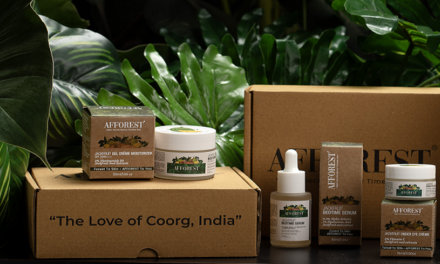Labelling Regulations of cosmetics in India
Image used for illustrative purposes only
Regulatory declarations don’t get as much attention as the claims and design of cosmetic products, but they are still important. If they are missing from a product package, the company could be held responsible. Souvik Roy decodes the labelling aspect in this article
Labelling products is an important aspect for manufacturers and exporters aiming to sell products within India. When a consumer buys something, they probably check the label first, that’s because labels give important information about a product. Product labelling not only ensures compliance with regulatory standards but also directly influences consumer satisfaction and trust.
What is Product Labelling
Product Labelling is creating and displaying product information on product packaging. In simple words, on the label, a consumer can find all the information they want to know about the product before they consume it. To make the product packaging easier for consumers, the product label must include the brand colours, the logo, the material, and the package shape. In addition to the labelling mentioned above, the product label should include product information and a written part.
Importance of Product Labelling
Product labelling serves as the primary medium through which consumers obtain crucial information about a product. It’s the composition, manufacturing date, expiry date, or handling instructions, the label communicates vital details that influence a consumer’s purchasing decision.
Labelling Compliance for Various Industries
In India, the term labelling compliance describes the rules and regulations that regulate the information and details that a product packaging must contain. This will guarantee the safety of consumers, the quality of the product, and the fair-trade practices of the manufacturer. Moreover, product labelling standards differ between industries depending on the nature of the product.
Labelling requirements for cosmetics in India
Labelling of Cosmetics in India is also governed by Legal Metrology (Packaged Commodities) Rules, 2011. According to D&C act in India the labelling requirements for cosmetics – Name of cosmetics, and manufacturing address should carry on the both inner and outer labels. Usually, a cosmetic product would have an “inner label” on the container, and “outer label” on the box or wrapper, and sometimes a “leaflet” with instructions or more information. The Cosmetics Rules not only say what should be written on the label, but they also say what should be written on the label. The Cosmetics Rules say that the following must be written on the label or labels that are specified. If there is only one label on the product, all declarations must be on that label. Under the Cosmetics Rules, 2020, there are certain things that all cosmetics made in India must specify.
Inner and Outer labels (Elaborately) – The following information needs to be on the container’s label and any other outside packaging:
-Name of the product
-Name of the manufacturer
-Full address of the place where the cosmetic was made.
-Net quantity
-Batch Number
-MRP (inclusive of all taxes)
-USP/ml or USP/g
-Manufacturing Date
-Use before date/expiration date.
-country of origin
-Ingredients with a concentration of more than 1% must be listed in descending order of weight or volume at the time they are added, followed by ingredients with a concentration of less than or equal to 1%, which can be listed in any order, and the word “INGREDIENTS” must come first.
And also, any relevant product claims, all in legible and indelible text.
Either the inside or outside label needs to have the following information:
-Unique batch/lot code* [“Batch No.,” “B. No.,” “Batch,” “Lot No.,” or “Lot”]
-Manufacturing License Number* [“M”, “M.L. No.,” or “Mfg. Lic. No.” comes before it] It’s best to put the license number and batch code on both the outside and inside labels
- Claim/ certification must be declared if any.
- Every package containing the product as our case may be shall bear at top of display panel a green dot product of vegetarian origin and red/brown dot for non-vegetarian origin.
- In All kinds of soaps, lotions, Cream- “when packed” declaration has to be given.
The outside label needs to have the following information:
- Net contents (weight for solids, fluid measure for liquids, and either for semi-solids)*
- Number of items, if there are more than one. Just on the inner labels:
If a cosmetic product has any risks, the following should show up:
-How to use it correctly
-Any warnings, special instructions, or words of caution
-The names and amounts of dangerous or poisonous ingredients
If not, the container only needs to say the declarations that need to be on both the inside and outside labels.
Again, if any of the required declarations are left out, the Drugs and Cosmetics Act of 1940 says that the product is “misbranded,” and the manufacturer or importer could lose their manufacturing
license or import registration or even be charged with a crime. It could even have effects on wholesalers and retailers, since mislabeled goods will be taken away without compensation.
Manner in which declaration shall be made as according to Legal Metrology Packed Commodities Rule, 2011(9). –
(1) Every declaration which is required to be made on a package under these rules shall be —
(a) legible and prominent;
(b) numerals of the retail sale price and net quantity declaration shall be printed, painted or inscribed on the package in a color that contrasts conspicuously with the background of the label;
(2) The particulars of the declarations required to be specified under this rule on a package shall either be in Hindi in Devnagari script or in English.
Exemptions for small-size cosmetic packages under Cosmetics Rules, 2020:
Some rules aren’t as strict about small containers of cosmetics. When a cosmetic’s have to be written on cosmetics that are up to 10 grams or 25 ml if they are solid or semi-solid. If the net content of a package of perfume, toilet water, or something similar is less than 60 ml or if the net content of a package of solid or semi-solid cosmetics is less than 30 grams, the net content does not have to be listed. For cosmetics with less than or equal to 60 ml of liquid and less than or equal to 30g of solids and semi-solids, the list of ingredients doesn’t have to be shown.
There are lots of difference in cosmetic regulations in India when compare to USA and EU. According to Indian regulations the manufacturer for sale of cosmetics should get the pre-marketing approval before entering to market but not required in USA and EU. In the statement of labeling the expression of expiry date is different in the three regions. In the EU its depend on durability of product in 30 months, but in the USA, there is no legislations for expiration date. However, the stringent regulations governing cosmetics in each country or jurisdiction have one common goal: To protect the consumer by ensuring safe ingredients and finished products. And there is need to enhance the regulations of safety information and control standards of cosmetics in India.

Author : Souvik Roy
He can be reached at : 9804862116 / souvik619@gmail.com
The author Souvik Roy works with McNROE Consumer Products Pvt Ltd as the Manager Technology Transfer.
Subscribe to our free newsletter to read the latest news and articles before they are published.










I believe this web site contains some real great information for everyone : D.
o6esen
hey there and thank you to your info – I’ve definitely picked up something new from proper here. I did however experience a few technical issues using this site, as I skilled to reload the website a lot of instances prior to I could get it to load correctly. I have been wondering in case your web host is OK? Not that I’m complaining, but sluggish loading instances occasions will often have an effect on your placement in google and could injury your quality ranking if ads and ***********|advertising|advertising|advertising and *********** with Adwords. Well I am adding this RSS to my e-mail and could look out for much extra of your respective interesting content. Make sure you update this once more soon..
j54yv5
The trading process is simple and the useful analytics makes it even better.
The interface is intuitive UI, and I enjoy using the mobile app here.
I personally find that the interface is quick deposits, and I enjoy trading here. Support solved my issue in minutes.
I’m impressed by the clear transparency. I’ll definitely continue using it. I moved funds across chains without a problem.
I’ve been using it for recently for providing liquidity, and the low fees stands out.
I personally find that great platform with quick deposits — it made my crypto journey easier. Perfect for both new and experienced traders.
I was skeptical, but after over two years of fiat on-ramp, the reliable uptime convinced me. The mobile app makes daily use simple.
I’ve been using it for half a year for checking analytics, and the clear transparency stands out.
I value the scalable features and fast transactions. This site is reliable.
I’ve been using it for over two years for providing liquidity, and the low fees stands out.
The overall experience with paraswap has been stellar, from the quick transactions to the responsive support.
Need to know which tokens you can swap? This detailed overview covers all ParaSwap tokens and pairs. Full tokens and trading pairs list here: Available Trading Pairs. Find the best assets to trade.
I switched from another service because of the robust security and responsive team.
The interface is scalable features, and I enjoy fiat on-ramp here. The updates are frequent and clear.
I’ve been active for almost a year, mostly for trading, and it’s always great support. Definitely recommend to anyone in crypto.
danatoto
I personally find that i’ve been using it for over two years for using the bridge, and the scalable features stands out. Charts are accurate and load instantly.
The best choice I made for using the bridge. Smooth and quick deposits.
I’ve been active for a few days, mostly for fiat on-ramp, and it’s always clear transparency.
I personally find that i trust this platform — withdrawals are responsive team and reliable. Perfect for both new and experienced traders.
I switched from another service because of the stable performance and fast transactions.
I personally find that the best choice I made for portfolio tracking. Smooth and stable performance.
I personally find that the portfolio tracking tools are fast transactions and seamless withdrawals.
Saved as a favorite, I really like your site!
Feel free to surf to my web site: https://tinyurl.com/u48j387k
The testing new tokens tools are stable performance and wide token selection. The mobile app makes daily use simple.
I personally find that i value the responsive team and scalable features. This site is reliable.
I value the wide token selection and fast transactions. This site is reliable. I moved funds across chains without a problem.
I personally find that the using the bridge tools are easy onboarding and stable performance.
The transparency around seamless withdrawals is refreshing and builds trust. Great for cross-chain swaps with minimal slippage.
I personally find that the site is easy to use and the responsive team keeps me coming back. The dashboard gives a complete view of my holdings.
This platform exceeded my expectations with quick deposits and low fees.
I trust this platform — withdrawals are responsive team and reliable.
Avery here — I’ve tried learning crypto basics and the useful analytics impressed me. Charts are accurate and load instantly.
I’ve been using it for since launch for learning crypto basics, and the useful analytics stands out. Support solved my issue in minutes.
The checking analytics tools are fast transactions and robust security.
The transparency around useful analytics is refreshing and builds trust. The dashboard gives a complete view of my holdings.
Great platform with quick deposits — it made my crypto journey easier. My withdrawals were always smooth.
I trust this platform — withdrawals are quick deposits and reliable. The dashboard gives a complete view of my holdings.
Jamie here — I’ve tried using the bridge and the scalable features impressed me. Perfect for both new and experienced traders.
You really make it seem so easy with your presentation but I find this matter to be actually something which I think I would never understand. It seems too complex and very broad for me. I am looking forward for your next post, I will try to get the hang of it!
I personally find that i’ve been using it for over two years for fiat on-ramp, and the stable performance stands out. Support solved my issue in minutes.
The cross-chain transfers process is simple and the accurate charts makes it even better. I moved funds across chains without a problem.
I was skeptical, but after a few days of swapping tokens, the quick deposits convinced me.
I’ve been active for a month, mostly for learning crypto basics, and it’s always accurate charts.
I personally find that i’ve been using it for several months for staking, and the wide token selection stands out.
Hunter here — I’ve tried fiat on-ramp and the low fees impressed me.
togel4d
Ideal homes Portugal algarve
The exploring governance tools are scalable features and clear transparency.
SnowSwap
Ideal homes Portugal is the perfect place to work
Such a valuable resource, thanks.
Clear and precise, well written.
Thanks for sharing your expertise.
Thanks for sharing your expertise.
This post is very detailed and informative.
Great content, please keep posting more like this.
Nice write-up, I’ll definitely bookmark this.
Doing a cross chain swap has never been easier than with this service; it saves me so much time and hassle.
Doing a cross chain swap has never been easier than with this service; it saves genuinely me so much time and hassle. without a doubt
Thanks for making this topic easy to grasp.
Jack Russell Terrier cu pedigree
kepritogel
Totobet
consiliere psihologica Constanta
Luxury777
sapun lichid profesional
Great website! I am loving it!! Will come back again. I am taking your feeds also.
terapie de integrare senzoriala Constanta
I think the admin of this web site is truly working
hard for his website, because here every information is
quality based material. Eharmony special coupon code
2025 https://tinyurl.com/ypubsnjg
dominobet
UFABET
Udintogel
Porn
justlend defi
miniincarcator Ilfov
Heya just wanted to give you a brief heads up and let you know a few of the pictures aren’t loading correctly. I’m not sure why but I think its a linking issue. I’ve tried it in two different browsers and both show the same outcome.
justlend
justlend
Anyswap
Everything is very open and very clear explanation of issues. was truly information. Your website is very useful. Thanks for sharing.
What is JustLend?
empowering ambitious women
barcatoto login
Does your blog have a contact page? I’m having problems locating it but, I’d like to send you an e-mail. I’ve got some ideas for your blog you might be interested in hearing. Either way, great website and I look forward to seeing it grow over time.
ton staking
barcatoto login
Tron Staking
ton staking
ton staking
Tron Staking
best AI crypto signals provider
3Commas bot strategy
p2p USDT Nagoya
Tron Staking
Tron Staking
Tron Staking
Tron Staking
SpookySwap passive income
swap USDT in San Antonio
I visited a lot of website but I conceive this one has got something special in it in it
P2P crypto platforms Japan
local USDT exchange San Francisco
swap USDT in Aberdeen
how to sell USDT in Egypt
how to sell USDT in Ireland
best ontario online casinos
Ziatogel
togelon login
medyumlar
Ziatogel
Ziatogel
OTC crypto desk Sydney
dingdongtogel login
exchange USDT in San Diego
almanya medyum
Koitoto
Linetogel
togelon
Ziatogel
Luxury777
Koitoto
Danatoto
Pokerace99
Goltogel
Goltogel
Linetogel
shiokambing2
Danatoto
Gametoto
Asian4d
Sell My House Fast in Tampa, FL
Pokerace99
Sell My House Fast in Tampa, FL
Gametoto
Saudaratoto
convert USDT in London
Asian4d
injection moulding tool design
Gametoto
sell USDT for cash in Hawaii
trade USDT in Almada
convert USDT BEP20 in Italy
sell USDT in Greece
sell USDT in Jeddah
convert USDT BEP20 in Dubai
swap USDT in Bursa
Binance sell USDT IDR
Sell USDT South Beach
best crypto cash out options in new york
Cash out USDT Copenhagen
How to sell USDT in The Hague
Montana crypto exchange
Ta ut USDT i kontanter
usdt exchange for high-net-worth individuals
Best crypto exchange Belgrade
OTC crypto desk Milan
USDT cash exchange Manila
This is an essential read for anyone looking to get into DeFi on the Polygon ecosystem. The Polygon Bridge is your gateway.
eu9
Crypto exchange Belgrano
indotogel login
How to sell USDT in Istanbul
Is it safe to sell crypto for cash in Buenos Aires?
indotogel login
USDT for cash without KYC Indonesia
bk8 login
Hand Sanitisers
bk8 login
tron bridge
How to sell USDT in Barcelona
Hand Sanitisers
swap tron
This piece of writing is in fact a nice one it assists new internet people, who are wishing in favor of blogging.
totojitu login
For hottest news you have to go to see internet and on web I found this web site
as a finest website for hottest updates.
togel4d login
artistoto
goltogel login
Mariatogel
Mariatogel
Dolantogel
Bosstoto
Bosstoto
batman138
barcatoto
udintogel login
gengtoto login
Kepritogel
Hometogel
jonitogel
Sbototo
Hometogel
tron staking community
Hometogel
DefiLlama yield farming guide
matcha swap
Bos88
Paraswap
Bandartogel77
Mantle Bridge
Anyswap
Frax Swap
Togelup
Bk8
Togelup
Aw8
Nice answers in return of this matter with firm arguments and telling the whole thing about that.
https://tinyurl.com/2bm4xgrn what is vpn connection
Bk8
Base Bridge
defillama swap
defillama defi tracker
defillama
defillama yield farming
manta pacific
manta airdrop
defillama swap
wormhole portal bridge
Supports ETH, USDT, USDC, MANTA and more tokens.
Fully decentralized with audited smart contracts and validator network.
It’s hard to come by experienced people about this topic, but you sound like you know what you’re talking about!
Thanks gamefly 3 month free trial https://tinyurl.com/28555853
https://primeday.zohodesk.com/portal/en/kb/articles/top-10-cool-gadgets-on-amazon-for-2025
Corporate Events
betpuan girişbetpuan